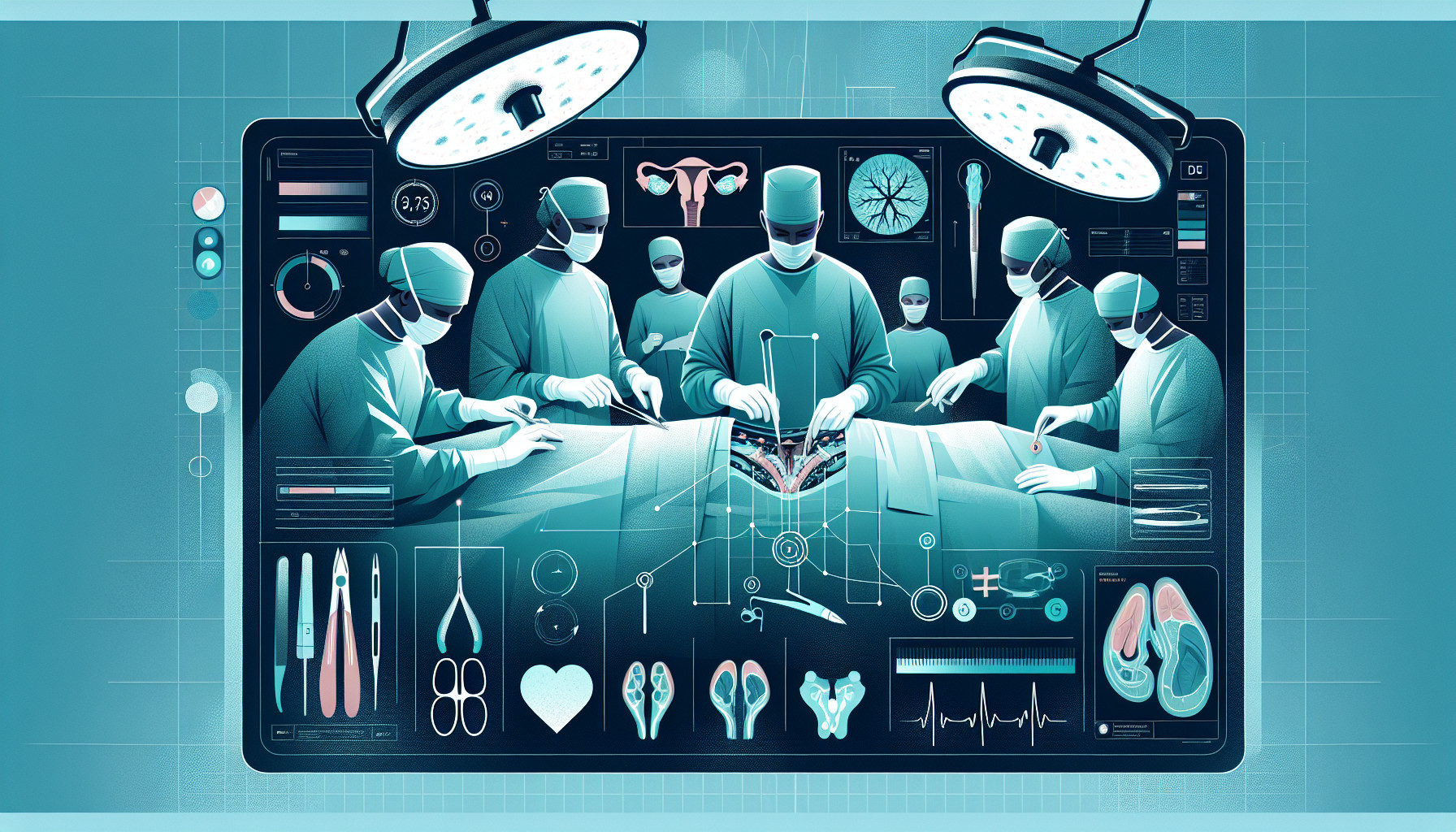Our Summary
This research paper discusses a new surgical option for testicular cancer known as Robotic-assisted retroperitoneal lymph node dissection (R-RPLND). It’s a less invasive procedure than traditional methods, resulting in less harm to the patient. The procedure has been successfully used, not only in early-stage testicular cancers, but also in more advanced, low-volume stage II cases, both before and after chemotherapy. Benefits of this technique include shorter hospital stays and less blood loss, with a similarly low risk of complications and good control of the cancer. The paper suggests that future research will continue to evaluate the long-term effects of R-RPLND and promote its use in treating testicular cancer.
FAQs
- What is robotic-assisted retroperitoneal lymph node dissection (R-RPLND) used for in testicular cancer treatment?
- How does R-RPLND compare to open RPLND in terms of hospitalization and blood loss?
- Are there plans for future studies on the long-term oncologic outcomes of R-RPLND in the treatment of testicular cancer?
Doctor’s Tip
A helpful tip a doctor might tell a patient about testicular surgery, specifically robotic-assisted retroperitoneal lymph node dissection (R-RPLND), is to follow post-operative care instructions carefully to ensure proper healing and recovery. This may include instructions on wound care, pain management, activity restrictions, and follow-up appointments. It is important for the patient to communicate any concerns or changes in symptoms to their healthcare provider. Additionally, maintaining a healthy lifestyle, including regular exercise and a balanced diet, can aid in the recovery process.
Suitable For
Patients who may be recommended for testicular surgery include those with testicular cancer, specifically those with clinical stage I or II disease, as well as those with low-volume disease in the primary or post-chemotherapy setting. Patients who are candidates for robotic-assisted retroperitoneal lymph node dissection (R-RPLND) may benefit from this minimally invasive approach, which offers shorter hospitalization, less blood loss, and comparably low complications compared to open surgery. Ongoing studies will further evaluate the long-term oncologic outcomes of R-RPLND and its potential role in the treatment of testicular cancer.
Timeline
Before testicular surgery:
- Patient is diagnosed with testicular cancer through physical examination, ultrasound, and blood tests.
- Patient undergoes further imaging studies such as CT scans or MRI to determine the extent of the cancer.
- Treatment options are discussed with the patient, including surgery, chemotherapy, and radiation therapy.
- Patient undergoes preoperative evaluations and preparation for surgery, including blood tests, EKG, and anesthesia consultation.
After testicular surgery:
- Patient undergoes robotic-assisted retroperitoneal lymph node dissection (R-RPLND) for testicular cancer.
- Patient experiences shorter hospitalization and less blood loss compared to open RPLND.
- Patient may have a quicker recovery time and reduced postoperative pain.
- Patient is monitored closely for any complications or recurrence of cancer.
- Long-term oncologic outcomes are assessed through follow-up appointments and imaging studies.
- Ongoing studies continue to evaluate the effectiveness and outcomes of R-RPLND in the treatment of testicular cancer.
What to Ask Your Doctor
- What are the potential risks and complications associated with robotic-assisted retroperitoneal lymph node dissection (R-RPLND)?
- How does R-RPLND compare to traditional open RPLND in terms of recovery time and long-term outcomes?
- Are there any specific criteria that make a patient a good candidate for R-RPLND over open surgery?
- What can I expect in terms of post-operative pain management and recovery after R-RPLND?
- Will I need any additional treatments or follow-up care after R-RPLND?
- How experienced are you and your team in performing R-RPLND procedures?
- Are there any alternative treatment options for my testicular cancer that I should consider before opting for R-RPLND?
- What is the success rate of R-RPLND in treating testicular cancer, and what is the likelihood of recurrence?
- How will R-RPLND impact my fertility or sexual function?
- Are there any lifestyle changes or precautions I should take after undergoing R-RPLND?
Reference
Authors: Gereta S, Hung M, Hu JC. Journal: Curr Opin Urol. 2023 Jul 1;33(4):274-280. doi: 10.1097/MOU.0000000000001094. Epub 2023 Apr 4. PMID: 37014761
